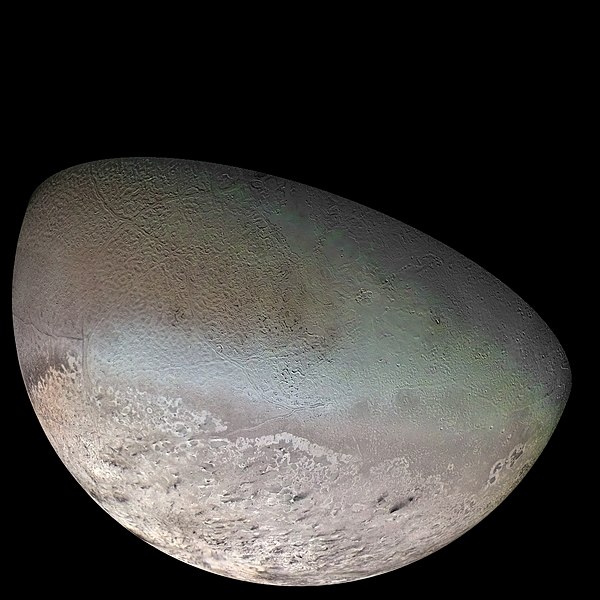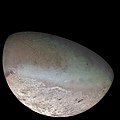Fasciculus:Triton moon mosaic Voyager 2 (large).jpg

Mensura huius perspectionis: 600 × 600 elementa imaginalia. Aliae mensurae: 240 × 240 elementa imaginalia | 480 × 480 elementa imaginalia | 768 × 768 elementa imaginalia | 1 024 × 1 024 elementa imaginalia | 2 048 × 2 048 elementa imaginalia | 4 700 × 4 700 elementa imaginalia.
Sua resolutio (4 700 × 4 700 elementa imaginalia, magnitudo fasciculi: 12.11 megaocteti, typus MIME: image/jpeg)
Historia fasciculi
Presso die vel tempore fasciculum videbis, sicut tunc temporis apparuit.
| Dies/Tempus | Minutio | Dimensiones | Usor | Sententia | |
|---|---|---|---|---|---|
| recentissima | 19:40, 10 Octobris 2011 |  | 4 700 × 4 700 (12.11 megaocteti) | Jbarta | Minimally compressed JPG from TIFF original at NASA. This image has already been colored by NASA. I think we have no business trying to "fix" the coloring. The only alteration made from the NASA original is to enlarge the canvas to enclose the complete sp |
| 21:00, 1 Ianuarii 2010 |  | 4 600 × 4 600 (2.81 megaocteti) | Supportstorm | Image Adjustments: Auto levels on contrast and color | |
| 21:59, 18 Februarii 2008 |  | 4 600 × 4 600 (1.71 megaocteti) | Kaldari | same image, better dimensions | |
| 04:59, 8 Aprilis 2005 |  | 4 500 × 3 500 (1.96 megaocteti) | Bricktop | same image, higher resolution | |
| 17:13, 3 Aprilis 2005 |  | 1 024 × 796 (150 chiliocteti) | Smartech~commonswiki | A color mosaic of Triton, Neptune's moon (large). Taken by Voyager 2 in 1989. Color was synthesized by combining high-resolution images taken through orange, violet, and ultraviolet filters; these images were displayed as red, green, and blue images and |
Nexus ad fasciculum
Ad hunc fasciculum nectunt:
Usus fasciculi per inceptus Vicimediorum
Quae incepta Vici fasciculo utuntur:
- Usus in af.wikipedia.org
- Usus in an.wikipedia.org
- Usus in ar.wikipedia.org
- Usus in ary.wikipedia.org
- Usus in arz.wikipedia.org
- Usus in ast.wikipedia.org
- Usus in azb.wikipedia.org
- Usus in az.wikipedia.org
- Usus in ba.wikipedia.org
- Usus in be-tarask.wikipedia.org
- Usus in be.wikipedia.org
- Usus in bg.wikipedia.org
- Usus in bn.wikipedia.org
- Usus in bn.wikibooks.org
- Usus in bs.wikipedia.org
- Usus in ca.wikipedia.org
View more global usage of this file.

